The Real Market With Chris Rising – Ep. 68 Arie Barendrecht
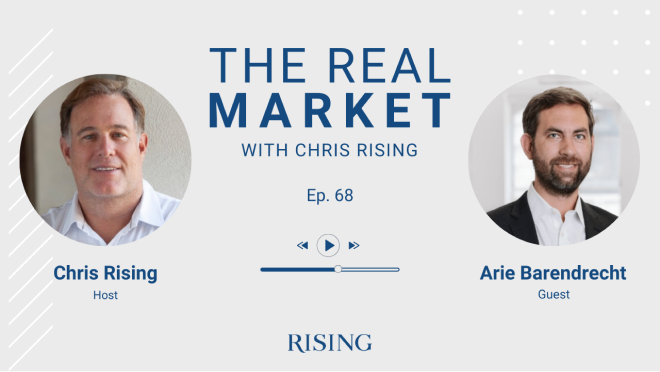
Speaker 1 (00:02):
Welcome to The Real Market with Chris Rising, the only podcast that brings the real estate conference panel to your headphones. You’ll hear from superstars from every realm of commercial real estate, the biggest brokers, the most well known architects, the largest investors, and the most visionary developers. You’ll learn what they do, how they do it, and what drives their success. We’ll discuss the latest trends across regional markets, capital flows, both national and global, and we’ll explore technology’s role in shaping all of them. We’ll take a clear eye look at where we’ve been, where we are now and what’s to come. Real conversations, real experts, real insights. This is The Real Market.
Chris Rising (00:49):
Well, welcome to The Real Market with Chris Rising. I’m really pleased to have with me today, Arie Barendrecht, who is the founder and CEO of WiredScore. And for those who don’t know WiredScore, I think it’s probably going to be one of the more transformational things in real estate up there with well buildings. And I’ve had the pleasure of doing business with Arie for a while and getting to know him. So I’m really excited to have him on the podcast. Arie, welcome to The Real Market.
Arie Barendrecht (01:15):
Awesome. Thanks for having me, Chris. Big fan of the podcast. There’s been some other prop tech legends on your show. Prior Elie Finegold and Gab McMillan and Jonathan Wasserstrum. So I’m excited to join the club of guests.
Chris Rising (01:31):
Well, it’s great to have you here. In some respects, I kick myself, because we’ve been working with you for a while and I should have had you on before. So it’s my fault. This is not something new to me. And I know it’s not new to most people within the CBDs of major markets, whether it’s New York or San Francisco or LA, but it may not be as familiar to all of the listeners. So why don’t you give a little bit about what WiredScore is, why it’s important and what you built?
Arie Barendrecht (02:04):
Cool, happy to. So WiredScore is a certification company. We run the world’s leading certification for in-building technology. So what that means is my clients are folks Rising Realty. So we work with landlords and developers and we assess and share recommendations to improve digital connectivity and smart technology in offices. We started in offices. And now as of a few months ago in North America, in multifamily as well. And then, of course, like other building certifications that your listeners will be familiar with, buildings can use the WiredScore rating to competitively differentiate by distinguishing themselves as having great connectivity and technology in the building. And, of course, in the modern age, this is what tenants care a lot about and tech driven experiences and ability to have great connectivity. So WiredScore helps landlords not just improve their buildings, but also attract and retain tenants as a result.
Chris Rising (03:11):
So I’ve been really impressed with the way Well Building has been doing advertisements and you’ve got J.Lo and others. My sense at the end of watching one of those ads is they’re selling the message that if you go into a building that has the well certification, you’re going to be safe, you’re going to feel safe, the air is going to be clean. If you were doing your own commercial, what would the end result of that commercial give the viewer about WiredScore?
Arie Barendrecht (03:39):
I think the promise to the user of real estate, whether it’s for your apartment or for your office is that a WiredScore building has a great tech enabled experience. And you can trust that the connectivity is great in the building. The thesis behind the business was an observation I had back in, I guess, end of 2012 in talking with friends about the trials and tribulations they were having in their offices with regards to the internet just being bad, sending people home for the day, not being able to access files in the cloud and otherwise. And that was a very surprising thing for me. Having never been in real estate before, I just assumed that digital infrastructure was fantastic in all of our office buildings, like it’s the modern age.
Arie Barendrecht (04:43):
And I came to learn that, that’s not true. And came to learn that when you’re looking for office space or really looking for a new apartment, so it applies across asset class, you don’t get any information about the connectivity of the space. There’s lots about choosing your office space that’s very tangible. It’s your views and your ceiling heights and floor plates and parking and access to transportation. And leasing agents are really good about talking about those factors and really selling. But at the end of the day, none of that really matters unless you have amazing connectivity and you shouldn’t be signing a lease, whether one year, five year, 10 year, unless you have full confidence that the building can provide the technology that you need to operate. And so that’s the whole idea behind the certification platform.
Chris Rising (05:39):
Well, it makes a lot of sense. And then you get into the real world of office. We’ll go to multi-family in a minute, but in the real world of office. I was brought up in office. Obviously we try to do the exact opposite of how I was brought up in office, but I was brought up in the office business to say, you give the tenant the space they can use it however they want within the lease, but it’s their job to get telephone, it’s their job to get internet, it’s their job to do basically anything within their space.
Chris Rising (06:13):
So I know that our frustrations and the reason we first got to know you was because we had a real problem at one of our first projects with AT&T. And you go to a lease space and you get someone ready to sign the lease and be in tomorrow, and AT&T says, “We’ll be out there in 60 to 90 days.” And then you call Verizon, “Well, maybe 60 days.” And then you call Level 3. And it was a constant frustration for us not to mention the fact that if God forbid the internet went down, our tenants, what could they do? Call a call center in India to talk about their internet service.
Chris Rising (06:47):
So when, as you know, we started a telecom company called 5×5, and we’ve worked with you, but what do most landlords do? Because most landlords aren’t going to take the time to start their own telecom company. How can you verify the broadband speed and the quality of the broadband experience if the landlord’s saying call AT&T maybe you’ll get your head in next week?
Arie Barendrecht (07:10):
Yeah. Exactly what you described is what we heard in the first year of WiredScore. Landlords, like the old fashioned view that this is a tenant problem, landlords have nothing to do with this. We give you the keys to this box and you deal with the rest. And that’s not true for a number of reasons. One you touched on, which is the building infrastructure and services available has a huge impact on what the experience is like in the tenant’s office, in the tenant premises. And second, and maybe more importantly, something we say a lot of WiredScore is that the rate of change in technology outpaces the rate of change in buildings. So our requirements, our expectations as users of real estate, these things are moving fast. What we expect to be productive and have a good office experience is changing quickly. And buildings fall behind really quickly.
Arie Barendrecht (08:16):
And so because of that, landlords now have a lot of pressure, particularly from tenants, from the users of real estate to keep up. And that means it’s not just AT&T’s problem, it means that the building needs to be designed and managed in a way to support great digital infrastructure. So everything needs to be diverse and redundant, meaning that if internet goes out from one connection in the building, there are backup connections available. Everything needs to be secure. So we look under the hood of buildings all the time and see that horror stories like cabling all over the place, in places where it shouldn’t be where folks can knock into it or cut it or accidents can happen.
Arie Barendrecht (09:05):
Over 70% of internet outages are actually infrastructure related. So some damage happens in the building or outside the building that causes the internet to go down. And that stuff is super preventable and in the landlord’s control. And the other thing to note about the landlord responsibility is you would know very well is the landlord is the gatekeeper. Landlords decide whether Verizon’s the only internet service provider in the building or if there’s 10 ISPs to choose from, which for tenants means that you can have access to premium providers, low end providers, dedicated providers, dark fiber providers, and the landlord dictates what that competitive landscape looks like. So in short, there’s huge responsibility on the landlord to deliver a great connectivity experience, and tenants are now demanding that more and more.
Chris Rising (10:00):
I may have told you this story in our discussions in the past, but I think it’s very relevant, because it’s less than 10 years ago, 2012, when we bought PacMutual. And literally within a week of buying the building, the largest tenant was a company at the time called American Business Bank. It was a bank, so federally regulated. Calls me 2:00 in the afternoon, the CFO is screaming, “My internet is down.” And I gave the response that I was taught to when I worked at the big REIT and all this up, “Why is that my problem? I’m happy to try to help you, but it…” And ultimately, the way the lease was written, it was their problem. But here was the reality of what happened, which we didn’t know. We bought the building within a week, AT&T, somebody had given the technician a key from the past ownership to go into the riser closet. They were putting in a new tenant and they literally unplugged American Business Bank to use some of the ethernet ports.
Chris Rising (11:03):
And it was just so astounding to me. I just assumed that the risers were protected. I just assumed there were policies. We did due diligence and that all seemed like it was there. So we learned a hard lesson. We worked it out with American Business Bank, but we now control all of our risers. We use third party companies to manage those risers. We then got so frustrated with Verizon and AT&T. We figured out, “Hey, it’s pretty easy to start an ISP if you want to. We did it for just our building. And now we’ve grown that business into a third party business.
Chris Rising (11:39):
But the lesson that we took away from it was that in 2012, you might be able to get away with that mishap once and just apologize. In 2021, you’re exposing yourself to lawsuits. And certainly within the brokerage community, they’re going to go, “You don’t want to go to that building, because they can’t control their internet. It’s never reliable.” I don’t know how post COVID. But ours was an education. Have you heard similar stories from landlords out there? Do you still have landlords who think this isn’t relevant? What’s the state today?
Arie Barendrecht (12:11):
I’d say I a couple things. One is the market is really driven by tenants and what tenants are asking about when they’re evaluating office space, what they’re bringing up on tours, what they’re negotiating into leases. And as you described in your example, tenants feel the pain when a building is not designed and managed for great digital connectivity. And that pain has real dollar signs. A recent report I read said, the one hour cost of downtime for a mid-market enterprise is about $300,000, both in lost business and productivity out the window, because no one can really do anything when the internet is down and everyone just stares at the wall.
Arie Barendrecht (12:59):
So there’s real… And imagine a larger enterprise, I think that number increases exponentially. And that’s why when you see the most obvious example of tenants starting to demand that landlords are proactively planning for and providing great connectivity is the Amazon. You’ll probably remember the Amazon HQ2 saga, of course, which dominated the headlines in our space. But what I was very intrigued when I opened up their RFPs. Their first RFPs you might recall was like seven pages. It was really condensed into the main things that Amazon cared about when it was looking for space. And on page three, one of the first things they listed was connectivity. Our future headquarters, they’re like, “The main thing that our future landlord needs to provide is high quality reliable connectivity for us to run our business.”
Arie Barendrecht (13:59):
And I think that is actually a big turning point in the landlord perspective on responsibility. And in realizing that this is just not a tenant responsibility and issue, this is something that if you deliver a great connectivity, you can use it as a big selling prop for your building and tenants will come to your building as a result.
Chris Rising (14:24):
Well, I would agree with that, at least in theory. I don’t know if it always works out that way. But one of the things that before we go into some of the other areas of WiredScore I want to delve into is that as I was talking about the world in 2012, one of the other things we were dealing with then was that most law firms, most architectural firms had their own servers in their space. And we were always like is there a closet downstairs that we could do what? That discussion has evaporated. The last architectural firm I knew that had a server that they controlled in their space got ransom and moved everything to the cloud.
Chris Rising (15:05):
But that puts demands on a building’s connectivity in a way that wasn’t expected two or three or four years ago. AWS, Azure Microsoft’s product, all this stuff in the cloud, it really matters on the connectivity. And is there things that you were doing within your WiredScore that could demonstrate why a particular building is better or worse in dealing with a cloud based business?
Arie Barendrecht (15:31):
Absolutely. The whole idea is that it’s both the services available in the building to connect that company out to the cloud. But again, don’t overlook the building infrastructure itself in the way the points of entry and telecom rooms and risers are designed to be secure and redundant. That is like a financial services firm will almost never sign a lease in a building unless there’s redundant connectivity coming into the building. And again, that’s a hard thing to know when you’re early in your search process for new space, unless there’s an entity like WiredScore that’s already validated that building and can give that transparency upfront in the process. But absolutely, I think the shift to the cloud has put even more pressure on the building and in the owner of that building to provide that infrastructure, that resilience, that access to the right services that tenants are looking for to today.
Chris Rising (16:33):
Well, so I want to come back around, talk a little bit about multi-family and some retail. But I think it’s really important that the audience understands that you are an entrepreneur, that you started this on an idea and they know a little bit about your history, especially the link you have with Mayor Bloomberg in New York. But before that, just was technology something that… I always tease that I did my undergraduate work in Nintendo, my graduate work in Sega. I was a video game fanatic, and that got me into technology. What about yourself? What’s your background with technology?
Arie Barendrecht (17:08):
I’ll have to play you in Tecmo Super Bowl sometime.
Chris Rising (17:13):
Bo Jackson.
Arie Barendrecht (17:16):
I’m a Raiders fan now, actually partly because of Bo Jackson and Nintendo. But yeah, my background is pretty unique when it comes to PropTech. I was an industry outsider. Spent most of my career in professional services at KPMG, and more recently at Boston Consulting Group, BCG, in management consulting. And the one thing I did spend a lot of time doing although mostly outside of real estate is figure out how to help age old analog industries adapt to new technologies and adapt to the digital age. And I did that in my prior career in financial services, media and entertainment. I worked for a number of newspaper companies, which was super interesting. This is when newspaper companies were losing their monopoly on the news and information is widely accessible on all corners of the internet. And these companies had to figure out how to alter their business model and make revenue from other places than advertising and so on and so forth.
Arie Barendrecht (18:31):
So there was a lot of re-thinking centuries old industries that I spent time on. And that prepared me well for this entrepreneurial path and to pursue the idea that there should be transparency around which buildings have great connectivity, because real estate’s going through that same transformation. And so when I came up with the idea, that was the thing, even though I said, “Well, I don’t know a lot about real estate and I certainly don’t know a lot about telecommunications, but I can use my fresh perspective and outsiders point of view and ability to solve problems in these traditional analog spaces and see if I can do it in real estate.”
Arie Barendrecht (19:19):
In 2013, I started basically marching around New York City, meeting with landlords and trying to convince them that the new analog to LEED certification, which was then 20 years old, would be a certification for technology and it was called WiredScore and it was the new way that landlords would compete. And to be quite honest, I got tons of pushback on that. And it wasn’t that landlords thought digital infrastructure was unimportant, it was, “Hey, Arie, who are you? First and foremost, who are you to come rate my building? I’ve been doing this for 50 years. And two, I really rather not compete on another dimension. This would be easier for me as a landlord to just not worry about.”
Arie Barendrecht (20:11):
And that led me to some meetings with Mayor Bloomberg and his team here when in City Hall I called the Economic Development Corporation. And at the time, Mayor Bloomberg was really focused on making New York City a competitor to Silicon Valley, attracting the best and brightest tech companies to the city. And bought into the idea that there’s certain things a city needs to do to attract tech companies, access to talent, great live, work, play, areas where people want to come and spend time, and they’re going to need great connectivity to drive their innovations forward.
Arie Barendrecht (20:52):
So quickly, my idea became the City of New York’s rating system for connectivity. And September 30, 2013, Mayor Bloomberg hosted a press conference announcing that the city had the first ever rating system for connectivity and buildings. And we went off and ran from there with the credibility of a bigger name than Arie Barendrecht behind that.
Chris Rising (21:17):
That’s a great story now. And when you started it, did you view yourself as a PropTech company or did you even view yourself tech company or were you just a ratings company? How did you view it when you started?
Arie Barendrecht (21:32):
Yeah, I think when we started it probably wasn’t necessarily we’re a tech company. But I think a key thing I had in mind from the beginning, which now is not a surprising thing is like the power of data and the ability to develop a really unique dataset as the only company in the world that collects information on the in building digital infrastructure. And this is data that quite honestly landlords don’t have in their own buildings. We walk around buildings with property managers and tell them where equipment is. And they’ll open up a subterranean cabinet and say, “Oh, I had no idea, there was telecom equipment in here. Never opened this door.”
Arie Barendrecht (22:24):
And even the telecom companies don’t have this data that for lots of reasons, mostly that their systems are terrible and they’ve evolved and acquired other companies over time. But we get calls from Verizon and AT&T saying, “Hey, WiredScore, can you confirm that we have service or not in this building?” I think it was hilarious when it first started, because we’re like, “How do you not know where your own equipment is located?”
Arie Barendrecht (22:54):
But the ultimate thesis is that as we grow and we now work with 3,500 buildings, we have a sense for what best in class looks like and where the breadth and depth of technology across the market. And that’s super exciting, because we have an ever evolving database and we can use that data to provide insights and benchmark data to our clients so that landlords know not just how they stack up against our standard, but how they stack up against buildings down the street, buildings in the city, buildings across the country. And that’s really where our technology comes into play is an ability to collect and analyze data as we expand our certification and use that data to drive value back to our customers.
Chris Rising (23:41):
So let’s talk a little bit about if someone’s listening and they’re like, “My 15 story office building in Chicago really could use something, but what am I signing up for?” So when you approach somebody or they approach you, what are they signing up for when they say they want to partner with WiredScore?
Arie Barendrecht (24:00):
Yeah. So basically a landlord is initially signing up for an assessment of the building. So we will send in an engineer, we’ll spend about a half day in the building. And then using our custom built software, we’ll be taking pictures and collecting information on all the digital infrastructure data we need to score the building. We then take that data and fee need it back to the landlord and say, “Mr and Mrs. Landlord, on our 100 point scoring system, you received a 60. Here’s what we found in your building, here’s what’s missing against our standard and here’s a roadmap for how you would improve it.” So we’re arming the client within information about where they could make investments or upgrades to get closer to meeting best in class expectations.
Chris Rising (24:55):
Does that become a list that some people go don’t show to me, I can’t stomach the number? Or is it a list of these are standard operating procedures you need to have? What does it look like to someone who’s just paid you some money to come and do this?
Arie Barendrecht (25:10):
Sure. We realize that what people really want to know is what are the lowest cost investments or upgrades I can make in my building that will have an impact on the tenant experience. So we’re very clear about that. And that means starting with, for example, services available. Bringing in internet service providers or WiFi providers or redundant internet from the rooftop, isn’t necessarily a huge cost to the landlord. And so we try to lead with those things, because we know that we won’t get thrown out of the room when we point out available opportunities to upgrade.
Arie Barendrecht (25:55):
Of course, as I said, if a building is trying to attract financial services companies and there’s no redundant infrastructure coming into the building, that might be an infrastructure investment to make. There might need to be new points of entry drilled into the building and pathways created. And there’s a cost to that. So we call that out and try to give a general sense of what that looks like. And the landlord can incorporate that into their capital planning process. It’s better to know where you’re deficient and what upgrades might look like than to not know at all. And I think two thirds of the buildings we work with eventually increase their certification level by at least one tier. So from silver to gold or gold to platinum, based on the recommendations we bring to the table.
Chris Rising (26:47):
So covering just some basics here, what is the difference between a platinum and your lowest level of rating? What is coming out of that platinum experience that you’re not if the build has no rating whatsoever?
Arie Barendrecht (27:05):
Yeah. The easiest thing, a platinum building, you’re going to have certainty that the building has high marks across all of the things that a tenant cares about. And we think that’s four things. We say power of choice. And so as a tenant, you can select from a wide variety of fiber based internet service providers, like five plus. The building is resilient is the second thing. So that’s a lot of the themes I’ve touched on about security and redundancy. You’re going to want to make sure your internet is not going down and costing you that hundreds of thousands of dollars an hour.
Arie Barendrecht (27:45):
Third is around mobile. So the mobile experience has to be strong. So a platinum building is likely to either have in building mobile solutions to create a strong mobile network or has at least measured that they don’t need those kinds of solutions, because the building naturally is positioned in a place that has great mobile connectivity. And then fourth that the building is what we say future ready. And this comes down to the infrastructure of the building and the ability to bring in new technologies if and when tenants request them.
Arie Barendrecht (28:24):
And so, for example, a large coworking company that we spend a lot of time with cares very much that a building has great mobile connectivity. They often require it in their leases that the landlord does something to make sure that mobile connections are strong and resilient. Building infrastructure might prevent the ability to install in building mobile solutions, because there’s quite frankly no space in the building for it. So we need to make sure that the building is designed and managed in such a way that technology and equipment that isn’t there today can be added in later on as needed. So that’s the thematic view of how we score a platinum building and we do so by looking at all sorts of nitty gritty under the hood that nobody really wants to look at, but we can look at it and make sure that we’re scoring buildings appropriately.
Chris Rising (29:25):
So as I look at your business, the natural entry point is office. And I think we talked about this in the past, multi-family, but I would imagine industrial too. And I’d like to talk about both of those asset classes. But let’s talk about what you’ve done in office. If someone’s listening today, is this just really only something that you can get a score on in the Silicon Valley or New York or San Francisco or LA? I know the answer to the question, but why don’t you tell us how how you’ve grown this company, because I find it pretty amazing.
Arie Barendrecht (29:56):
Yeah. Look, so we started in New York City. I actually originally named the company Wired NYC, which was a foolish title given growth aspiration. So Wired NYC quickly evolved to WiredScore as soon as our New York City clients started asking us to work with their buildings in New Jersey and Connecticut, was probably the first two places right outside the city. And suddenly the brand had to change. But that same path of customer demand has taken us through the US so we can work with any building across the US Canada.
Arie Barendrecht (30:35):
And in three weeks we will launch across the rest of Europe. And so we’re now in 12 countries. We’re soon going to be in 20 countries, which is super exciting. And the end vision is to be a global standard for technology and buildings. And so we treat our rating system as a globally consistent lens on what best in class looks like from a tech perspective.
Chris Rising (31:07):
So you can talk about things in terms of square meters just as well as square feet?
Arie Barendrecht (31:11):
Oh boy, yeah. My brain breaks a little bit, but yes, I have to do that.
Chris Rising (31:18):
And are there any intricacies that are really different if you’re talking about a building in Tokyo versus a building in Berlin versus a building in New York?
Arie Barendrecht (31:29):
We spend some time investigating the market to make sure that our scorecard, as we call our rating system, will make sense and we’re using terminology the right way. But the thing that we have found is consistent is those same themes apply. And so any building anywhere in the world, we believe needs to deliver the same things for their occupants, the power of choice, resilience, a mobile experience and future readiness. And so while we’ve seen some parts of the world are stronger in some areas than others, the same scoring themes apply globally. And I think that’s important, because when some of our clients… If McKinsey is targeting WiredScore silver buildings and above, they’re managing a global real estate portfolio, and they need to know that a WiredScore silver building provides a certain level of connectivity consistently whether in New York or in Australia or otherwise.
Chris Rising (32:39):
So one question I meant to ask earlier, but it’s, I guess, appropriate right now is if you get the certification for the building in 2021, is that good for 10 years? Is it good for 20 years? Or is it good for six months?
Arie Barendrecht (32:52):
I should have pointed that out. Yeah. So it’s a two year certification. And so after, if and when a building qualify for certification, they can then promote and market the building as WiredScore certified silver, gold or platinum. We train the marketing teams and leasing teams that our clients on how to do that. Lots of times people put out press releases, put us on their website, in their building lobby, increasingly in their ESG reporting as another way to describe asset quality and portfolio quality and how the landlord is protecting the building from obsolescence.
Arie Barendrecht (33:33):
So we hand over the IP and training that enables our clients to do that. And then at the two year mark, there’s a re-certification. And that requires a full new assessment of the building. The building evolves over time. But more importantly, as I said earlier, technology evolves even faster, which means that we need to continue to evolve our scoring system to ensure that best of class always meets cutting edge tech requirements.
Chris Rising (34:01):
So if my building is a platinum in 2021, and it’s not in 2022, can you point to what are the most obvious reasons why someone’s building would go from the top to fall off?
Arie Barendrecht (34:13):
Yeah. Maybe a good example is as we’re evolving is when we started WiredScore, mobile wasn’t a big part of our scorecard. And then over a four year period, we started giving more and more credit all based on what we were seeing in the market where tenants weren’t really requesting dash systems or in building mobile solutions as a fundamental part of leases. And we start hearing that in the market and that starts getting weight in the scoring system.
Arie Barendrecht (34:45):
Taking that example further, 5G readiness is now a big topic. I know we’ve been talking about 5G forever, but our scoring system started with, okay, you get some credit, if you have an in-building mobile solution, we’re now awarding credit if the mobile solution is 5G upgradeable, because that is going to be more and more important in the years to come. And so we’re constantly evolving the scoring to meet tenant requirements.
Chris Rising (35:16):
Well, just on the mobile, since we’ve been big proponents. And if I had to bet three years ago, I would’ve said 5G would’ve overtaken us. Clearly has not. I don’t think it has a whole lot to do with the pandemic why it hasn’t. I think the technology isn’t as good yet as they had promised it to be. And I think that’s just the bottom line. But if someone’s looking at making an investment in their building and they’re saying, “Okay, I could do a dash system and make sure that that three and 4G mobile works pretty well, or do I want to…” Because what we’re seeing from a technical standpoint is the dash systems don’t necessarily do well with the 5G systems. Those are ultimately going to have to be hardwired with ethernet. And so I guess my question is how important is 5G in your rating system right now when the technology hasn’t quite gotten to where we all thought it would be?
Arie Barendrecht (36:09):
It’s still that in particular is a pretty small waiting in the scoring system. So your thesis is correct. And that’s what’s great about the way we calibrate is we will just increase waiting over time as that becomes a bigger need. But I agree with you on 5G. I wouldn’t say we’ve stopped talking about the importance of prepping for 5G, because if you’re spending tons of money on a dash system, you’re going to want to make sure you don’t have to rip and replace it-
Chris Rising (36:45):
Yeah, that’s right.
Arie Barendrecht (36:46):
…anytime in the next 10 years when 5G is here, critical. But in general it’s like make sure that your 4G connection works. Let’s not obsess about 5G just yet, but I’d make sure that if and when that upgrade is necessary, it’s as uninvasive as possible, because these systems are expensive. They’re a dollar or two a square foot for your building and you don’t want to redo this in five years time.
Chris Rising (37:15):
I don’t have a lot of predictions that I would stick to you about what I think post COVID is going to be, because I think there’s a lot of unknowns. There’s one known though that if you had an office building where someone goes to the parking garage, their cell phone doesn’t work, they go on the elevator, their cell phone doesn’t work, and they go to their office space and their cell phone doesn’t work, you are never going to re-lease that space. We are addicted to this cellular mobility because of COVID, yes, it was in our home, but we all were walking out of our home because our kids were going crazy or we just… And so the reliance on mobile is just gigantic. And so I do believe that, that one, you will never lease an office building again if an employee can’t use their cell phone in the space.
Arie Barendrecht (38:00):
Totally agree. I think common area WiFi is becoming in the same bucket. People don’t want to sit in their offices all day. They might want to go sit in the courtyard or in the lobby and have a coffee. And Those kinds of the desire to have varied workplace experiences even within the building, means that building owners need to provide that connectivity in the areas of the building where people might be working or chatting or surfing the web or whatever.
Chris Rising (38:29):
So on that point, I used to be a prolific business traveler. I’m unless so now, because people aren’t taking as many meetings. But a couple years ago, all the Marriotts, the Hiltons would brag about their WiFi speed. And a lot of it was marketing and not real. As you look at where the office business is, we’re landlords, we’re trying to get tenants that will pay big lease rates, we’re willing to pay to have someone like yourself come in and say, “Hey, this is a credible building, it’s a platinum WiredScore.” I have to imagine that you’re seeing other opportunities within other asset classes. So hotels jump out to me, number one. Multi-family jumps out to me. And obviously I think the way industrial is going where it’s important as an asset class is growing so significantly. But talk about what WiredScore is doing in terms of its growth into multi-family and perhaps hotels and that kind of thing.
Arie Barendrecht (39:22):
Yeah. So I think the overarching thesis applies to almost every type of building or really space where we spend time, which is ever increasingly the quality of the connectivity and the technology driven experience is going to matter and influence which spaces we choose to spend time in. And in real world terms that applies to office leasing and apartment renting. It in the future could apply to air travel and which coffee shop you want to sit and work in for an hour between meetings when you’re visiting another city. It really does like our thesis. And I think lots of people believe this. It really is a top decision making criteria for all different kinds of space.
Arie Barendrecht (40:19):
The challenge for us is how do we sequence our roadmap, our expansion into new asset classes when everything seems like it could use a WiredScore. And I get texts and emails from distant relatives and friends all the time like, “Why don’t you have WiredScore on Amtrak? Why don’t you have WiredScore in baseball stadiums, because I can’t send texts every time I go to a Yankees game?” It’s pain everywhere.
Arie Barendrecht (40:49):
We consider a lot of different factors in how we’re sequencing. The pandemic shone a huge light on connectivity in our apartments and everybody working from home. Now, I think we all know that we’re going to be spending time working from home, likely a day or more a week now and in the future. And so accelerating the expansion of WiredScore home or multi-family certification was really important. We had launched that business in the UK a couple years ago. And a couple months into the pandemic, we said to ourselves, “This has to be something we can offer globally as quickly as possible, because it’s just so important to folks to have great connectivity at home.”
Arie Barendrecht (41:39):
The next one on our list at the moment, although don’t hold me to it, because our roadmap changes quite a bit is we’re really keen on exploring industrial for a lot of reasons. One, the fundamentals of the segment of real estate. It’s a really high growth segment, of course. And if you think about where a lot of industrial properties are located in areas outside of large cities, getting great connectivity to enable the operations of those spaces is a real challenge. So we are exploring what a WiredScore for industrial could look like for bringing to market probably next year at some point. Beyond that-
Chris Rising (42:23):
Well, I was going to say, and I would imagine that big box retail, some has to fit in there. It’s probably a lot like industrial. I had a friend recently, this big box retail here in Pasadena, there’s DICK’S Sporting Goods, there’s Best Buy. And he had opened a franchise of an ice cream store and next door was a Chipotle who was a franchise. He had spent all this money on square for doing his cash register. So the Chipotle got blah, blah, blah. They get there and there’s no broadband to the property. They literally were told you could do DSL or something like that.
Chris Rising (43:04):
And he had to band together the other big franchisees there and say, “Look, let’s promise Spectrum that they’ll have our business and maybe we won’t have to pay for it.” But that was something I was like you didn’t think. Not you’re stupid and I said, “You didn’t think about that, uh?” It was like, no, I just assumed. And I think when it comes to apartment, less so now people are pretty astute to it. But in industrial and big box retail, there’s a lot of assumptions going on. And the reality is the big providers aren’t there for you at this point.
Arie Barendrecht (43:37):
You got it. A lot of these retail spaces were built before the internet or without the internet in mind. And to take that even further, if you think about these direct to consumer companies that started out online and are now moving to retail, they’re trying to recreate this still a digital first brand experience in the retail space, mobile point of sale where you can get the Apple store experience. And if you have mobile point of sale, those iPads are running on WiFi, and if something happens, how are you going to ring up customers? And so we hear a lot of complaints from retail tenants about the challenges of getting in a well connected space and certainly see that as a new frontier for us at some point.
Chris Rising (44:27):
Well, I expect that you’re going to have explosive growth just based on the demands of everybody’s cell phone and iPad and surface pad and all that. But let me take it back, because I know our listeners are always interested. You started this business when you were just literally walking down the street and talking to landlords. What was infrastructure that you built on? Did you say, “Hey, we’re going to go with Microsoft and use the Microsoft operating system and grow that way?” Did you go Google? How have you grown? And what technology do you use? And how many people are using it?
Arie Barendrecht (45:05):
Yeah, we’re a full Google shop in terms of our business applications and everything. We have a global team, we have about 100 employees and we’re spread across New York, some remote employees across the US, big team in London, Berlin and Paris. And we’re all using shared applications. And so we have the Salesforce infrastructure, we have marketing software that we’re using, we leverage third party databases to collect real estate information. Everything is accessible in the cloud no matter where you’re located and it needs to be collaborative and enable a distributed workforce.
Chris Rising (45:48):
What do you use for project management? Do you use something like Asana or do you just work within the task of Google? What do you do?
Arie Barendrecht (45:54):
We use JIRA for road mapping this part. And so our product team is deeply versed in that. And we unfortunately have lots of spreadsheets. Still as a former management consultant I can’t seem to let those go. But at least they’re Google sheets. So they are…
Chris Rising (46:14):
I hear you on that. What about, how do you look at this world where we weren’t going to the office for 18 months? Are you a believer that even as a global company, having those people in a certain city, getting together a couple times a week is important or 40 hours a week? How do you look at that?
Arie Barendrecht (46:35):
We do believe that. So we are in office first culture. At the moment we are coming in two days a week, but we’ll probably increase that to three or more in the new year as people are easing back into what coming into the office looks like. And we know the pandemic has been a challenging time for lots of us. We’re trying to wind back up slowly and easily to get people reintroduced to the old way of working or at least a hybrid way of working. But-
Chris Rising (47:13):
I obviously agree, but what’s specific about your business? That I have a few people who scoff at me as an office landlord and say I have a dinosaur and they’re not relevant. What is it about your business that you think is important to have people in an office collaborating?
Arie Barendrecht (47:32):
I don’t think it’s WiredScore specific, because obviously as a globally distributed team, we are really used to collaborating remotely. But what we haven’t been able to super successfully replicate is the benefits of in-person collaborative work and culture building. And maybe other companies have done that better than us. I think everyone is on a learning curve there, but we really value it. And that means getting… Right now we have our client success team all come in together one day a week. And they plan certain conversations and meetings for that specific day that are just better had in person.
Arie Barendrecht (48:17):
There’s another day where our client success and operations teams both come in. And even though they’re not working a ton directly together, they sit in clusters near each other and get benefits. There’s the benefit of osmosis that we lack in a fully remote environment and those kinds of things that we’ve just seen real benefits from that. And we don’t need to be in five days a week to reap those benefits, but we need to be in more than zero. And so that’s how we’re thinking about the world.
Chris Rising (48:48):
There’s a part… I just enjoy office. It’s a place where I’m more focused. It’s a place where I can see people. I don’t think it’s the end all be all. I look at that and we’re not that far apart in age. We grew up when being in the office, especially if you worked at a consulting firm, at 7:00 in the morning with a light on mattered, and staying till 10:00 at night mattered. I don’t think that matters anymore. And so I’m willing on the edges to say the office is not a 24/7 place to be or a 60 hour awake place to be.
Chris Rising (49:19):
But there’s just certain things that happen organically that maybe it worked the first three months of COVID because nobody left their house and you could have 14 hours of Zoom calls. But yeah, now my kids are back in school. I got to take one to soccer, one to volleyball. People will do lunches. That’s why I’m sitting at home right now. Normally, I’d be in the office on Wednesday, but there’s traffic back in Los Angeles. I was going to be late. So it was closer to come home and do this from home. So it does feel like it’s coming back a little bit. But I just don’t think a world of 14 hours of Zoom is a world that any of us want to live in.
Arie Barendrecht (49:57):
Totally. And look, I love how there’s less focus on when you’re online and when you’re offline. As a former Los Angelino myself, I could imagine that being able to leave work and beat traffic some days when you need to get home is probably amazing. And when I worked in downtown LA, that was unthinkable. My day ended at 5:30 or 6:00 and I was on the 10 for quite [crosstalk 00:50:23]. So there’s huge benefits to that change of mindset. And I’m sure that’s good for everyone.
Chris Rising (50:30):
So we own 3.5 million square feet. And our occupancy, it’s going up a little bit on a per day basis. It’s now around 40%, but it’s been about 20 to 30%. But yet the freeways are full. So people may not be coming in the office, but they’re going places. Well, let me ask you. Go ahead.
Arie Barendrecht (50:49):
I always look around at those random times of day when the freeway’s packed like where is everybody going?
Chris Rising (50:54):
There you go. [crosstalk 00:50:56]. So let me ask you this. As you’re looking at a world post COVID and feels like people are coming back over the next year or so, six months or so, what do you think the biggest challenges are, not necessarily just for your business? What are the biggest challenges you think business is going to confront? And what are you doing for your business to try to capitalize on those?
Arie Barendrecht (51:20):
Yeah, I think broadly in our space, it’s a super unique and challenging time for folks in your seat as a building owner and operator. And it’s becoming more of a tenant market and that means the competition is heating up to attract and retain tenants. And we hear it all the time, this flight to quality, but I really believe that is true and tenants are being active in looking for new and better space and being more demanding of what their workspace does for them. Even per the last topic, when you’re trying to get your folks to come in a couple days a week when there’s an alternative, which is working from home, suddenly there’s even more of an impetus for the office space to deliver a productive and collaborative and safe and enjoyable environment.
Arie Barendrecht (52:15):
And I think the thing I’m seeing is people quite panicked. Maybe panic is too strong of a word. But there’s crossroads of hundreds, if not thousands of technology solutions to think about to employ to improve the building experience. And so I think at this moment in time, as landlords are preparing for battle, I empathize with how hard it is to navigate the world of PropTech and figure out what solutions make a difference. How that’s influencing WiredScore and what our role is, is we’re interesting. We’re not an access control system or a tenant engagement app or another specific purpose technology that the landlord would employ for their building. We are an industry standard. We’re trying to set the guidelines and the roadmap for how you would improve your building.
Arie Barendrecht (53:19):
And we’re thinking a lot about what it would be like to be a landlord trying to attract and retain tenants and navigate this space of thousands of technology solutions and how hard and confusing that might be. And so that means evolving our products. So we want to be more than a certification, we want to help people navigate, find the right technology solutions, understand roadmaps, to thinking about connectivity and smart technology and how to invest in it and deploy it and try to be a trusted navigator of the space, knowing how hard it is to be in your seat. So that’s the main thing we’re thinking about from a product standpoint.
Chris Rising (54:06):
So just looking at the history of some of these certifications, I remember, I’m old enough to remember LEED starting and being scoffed at and then becoming a standard fit well, and well being why would anyone do this to now being a standard. I would say that at least in the CBDs, WiredScore has become a standard. What do you think happens though to the certification industry? Is it so specialized that WiredScore really will only stay in telecom capacity and things like that? Do you think the business merges into one thing? What’s your view?
Arie Barendrecht (54:47):
Yeah. Look, I’ve touched on smart technology a bunch, but I should have mentioned that we have two products, WiredScore certification for connectivity and SmartScore, a certification for smart buildings. So slightly different subject matter that each rating system focuses on both equally important to providing a great technology experience for the building. We introduced SmartScore, also empathizing that there’s tons of building certifications more and more introduced each day and there’s risk of certification fatigue in the market. And that’s something that we have to always be aware of. And I think the key thing for us is don’t just be a stamp on the door that when I see new entrants coming into the space, that, that’s the approach like, oh, anyone can start a rating system, let’s just invent a new certification seal and see if we can hand it over.
Arie Barendrecht (55:51):
And I think the thing that will help WiredScore and SmartScore win in the technology vertical in the way that LEED has done an awesome job of in sustainability is always remaining relevant. And that’s vital. We have to keep evolving our scorecard and making sure that we are at the cutting edge and trusting how the industry trust us, that we are sensible and delivering thought leadership and value. But the second is delivering value beyond the certification. And I think that’s where we’re a lot different than LEED and some of the other certification businesses in that we don’t just care about giving you a score and having you market it, we actually want to give you data and tools to help you improve your building. And that’s where maybe we’re unique as a certification business that we care about more than the achievement of certification. We care about the journey. And we know that delivering a smart building is hard. And so how can WiredScore help with that. And we think that will help us be around for a long time.
Chris Rising (57:05):
That’s terrific. Well, we’ve been partners with you for, it feels like a long time, but I think it’s valuable. I know that when we have tenants come through and they see what our WiredScored is and where we are, it’s a value. And I talk about it with some of our pension fund partners who are just starting to understand this certification and its value, mainly because it’s been put in their face with COVID. And I think it’s going to just be one of those things that it’s on every broker’s list that you have to know what the WiredScore is, if you’re going to tour through a building.
Chris Rising (57:43):
And so I congratulate you on your success and how you’ve grown this. I look forward to seeing how this grows. I think multi-family is going to be huge. It’s been a long time since I’ve been a renter, but I just think that why would you rent an apartment and not want to have some independent verification of what the broadband speed is? I just can’t imagine someone not doing that.
Arie Barendrecht (58:05):
You got it. And I appreciate you being a great client. And it’s nice to work with a company like Rising who gets it. And you’ve got it from the earliest stages that this is something that the building has to deliver to be considered a high quality building and asset. And it’s always nice to work with clients that don’t don’t need a ton of convincing.
Chris Rising (58:30):
All I have to do is get screamed at about how I’d ruined somebody’s business like American Business Bank did to me. Then you start going, “Oh my God! This is important.” But I think there’s a lot of listeners out there who knew it was important. And this was great to have you explain exactly your business. All right. I really appreciate it. I look forward to seeing you soon and good luck on everything you’re doing.
Arie Barendrecht (58:51):
Awesome. Thanks so much, Chris. Thanks for having me today. I enjoyed it.
Chris Rising (58:53):
Thank you.
Speaker 1 (58:55):
And please don’t forget to follow us. We really appreciate it if you subscribe to the podcast. You can do that on Apple iTunes or any of the other podcasting services. It’s The Real Market with Chris Rising. And follow us on Twitter at Chris Rising or at RisingRP. And please follow our blog chrisrising.com or risingrp.com. Thanks so much.
Speaker 4 (59:19):
This episode of The Real Market is brought to you by Rising Investor Platform. The platform provides accredited investors with exclusive real estate investment opportunities on a deal by deal basis across various asset classes, including office, industrial, hospitality, multi-family, and data. The platform also provides an inside look at deals in our pipeline while giving investors the chance indicate interest before it’s too late. We recently funded our acquisition of 9320 Telstar, a mixed use office industrial property in El Monte, California using our investor platform. To learn more about how accredited investors can join the Rising Investor Platform, please visit risinginvestorplatform.com.

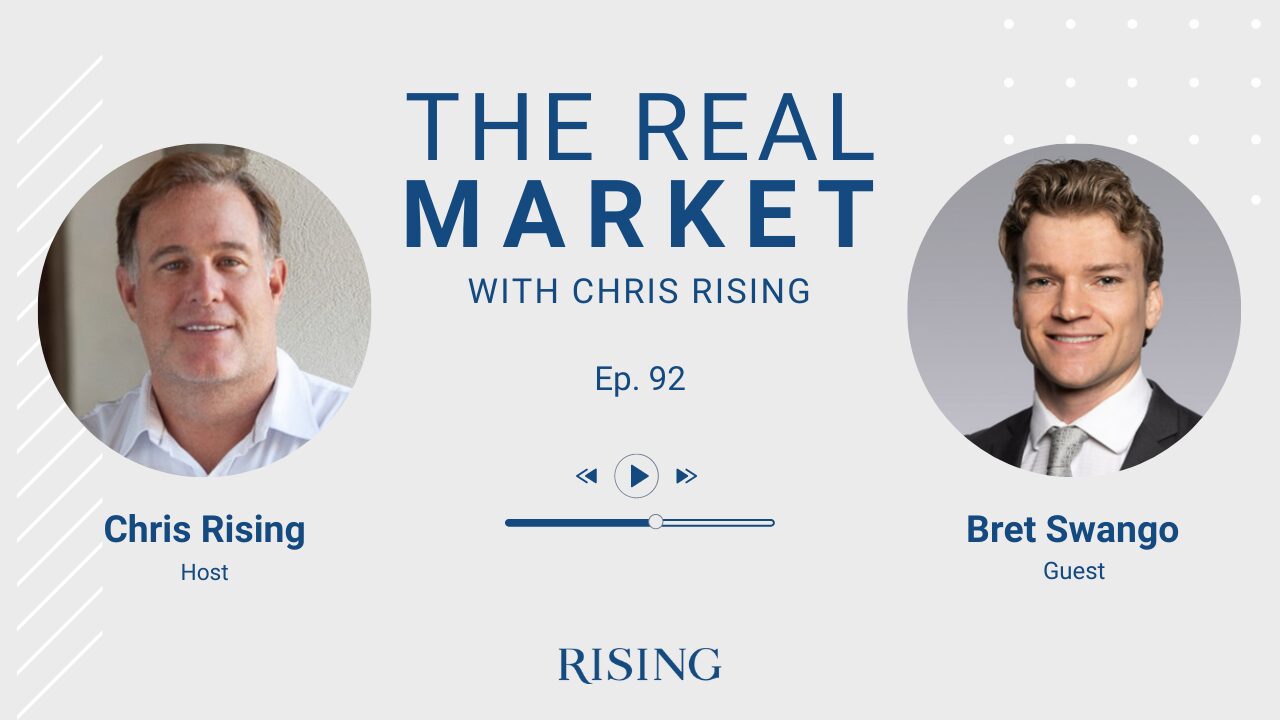
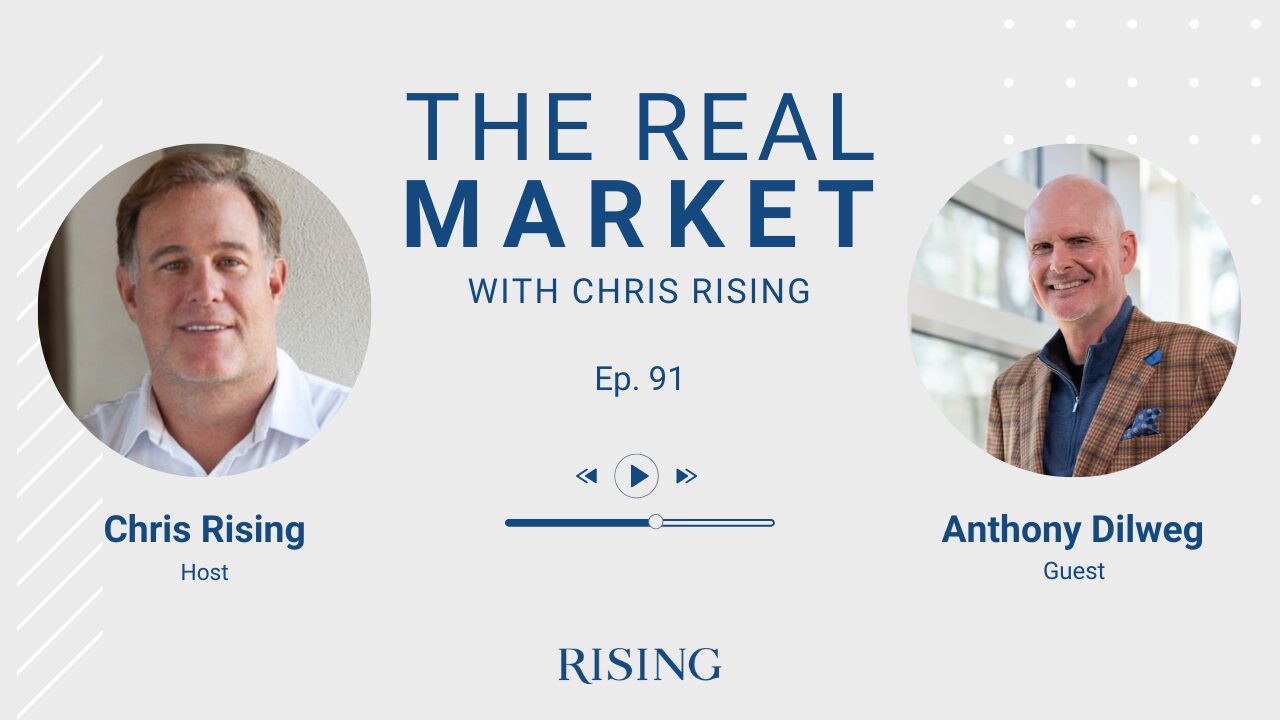
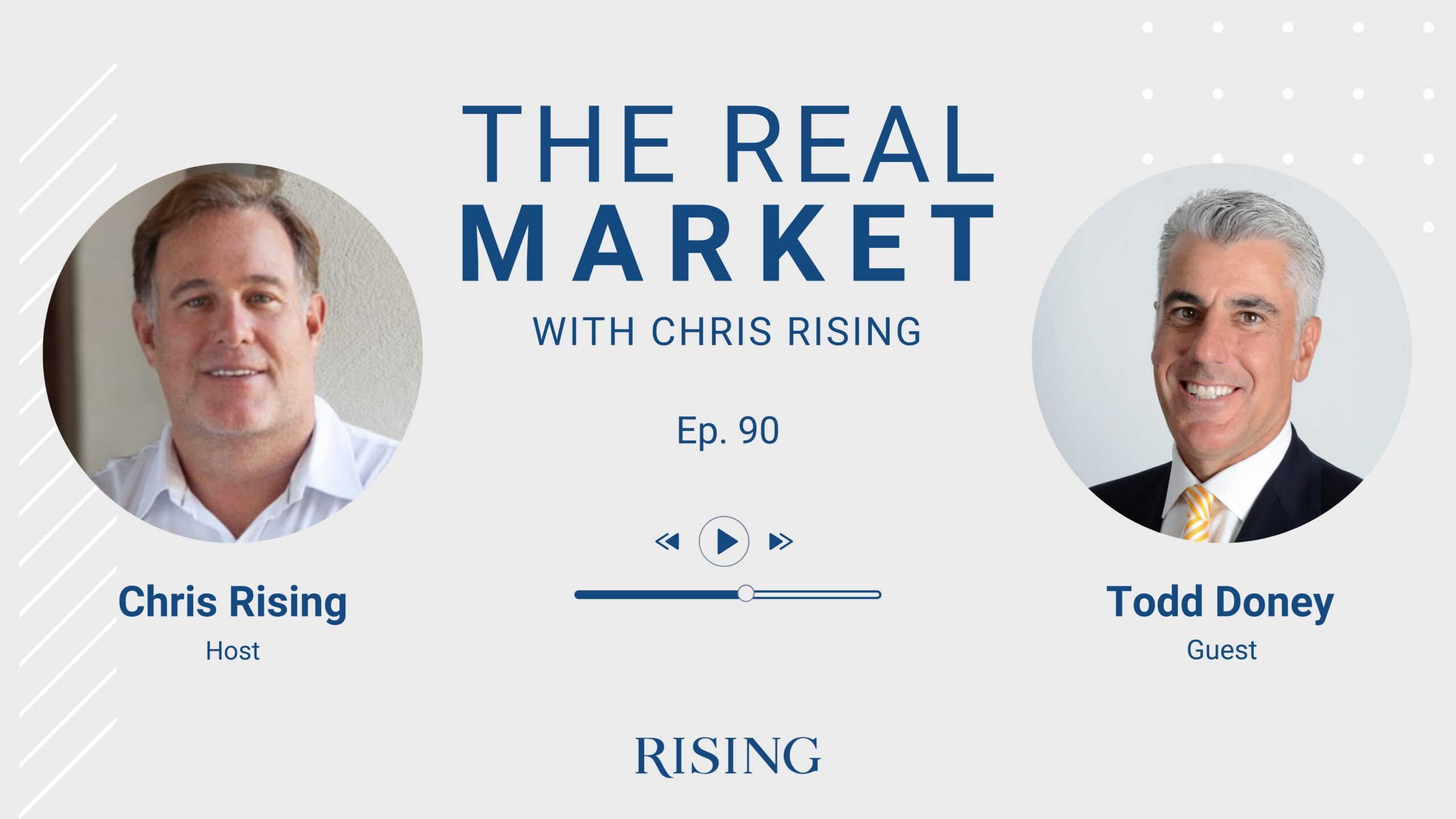
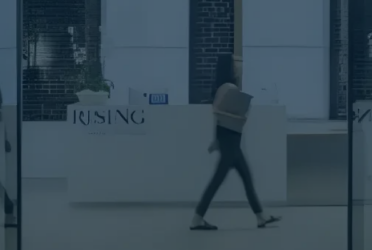
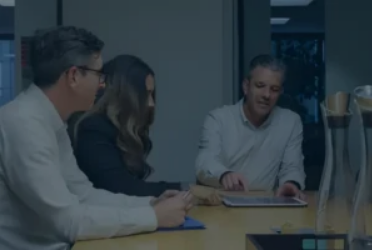
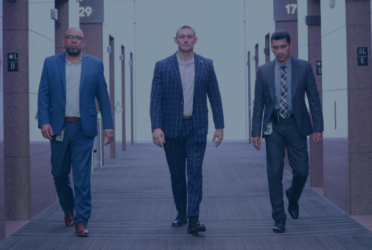
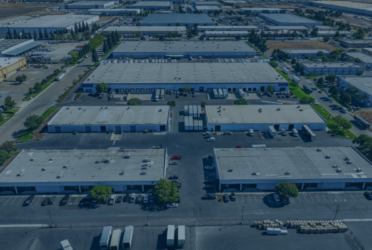
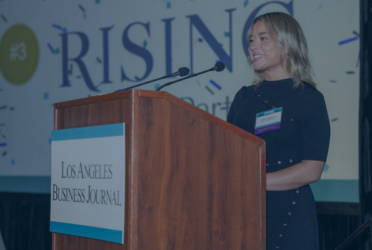
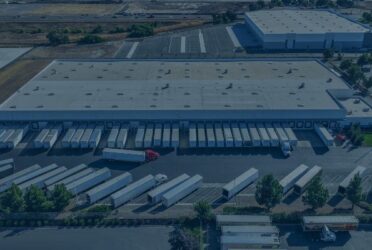
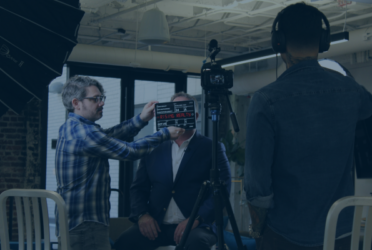
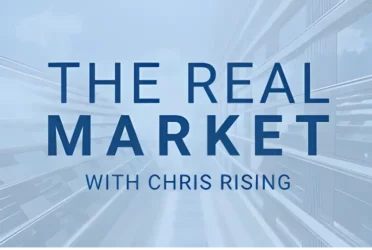 Podcast
Podcast